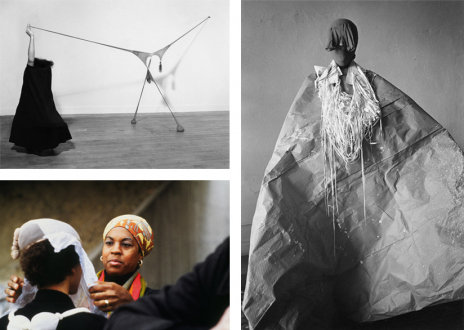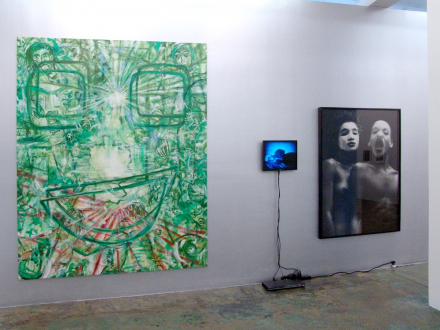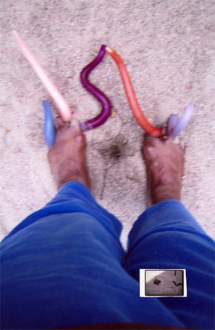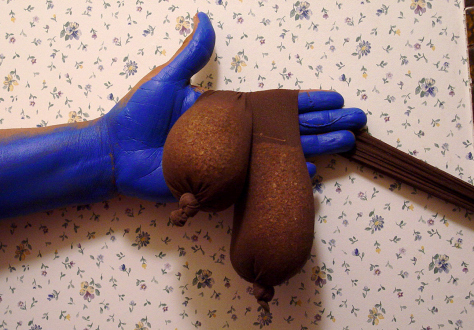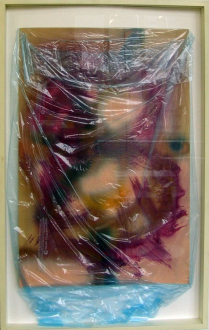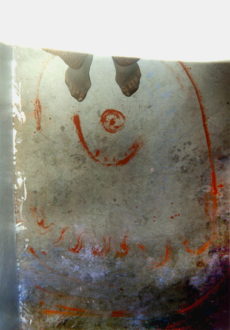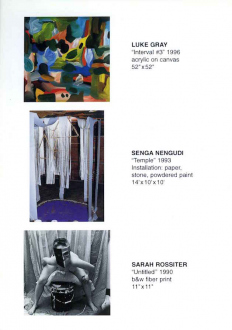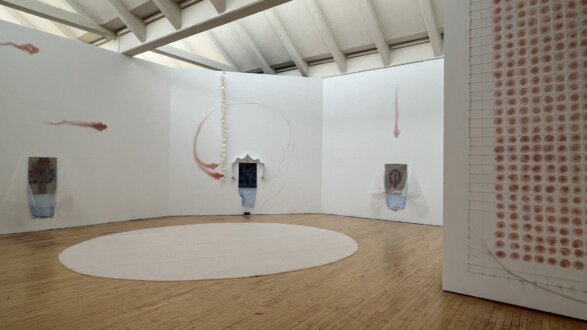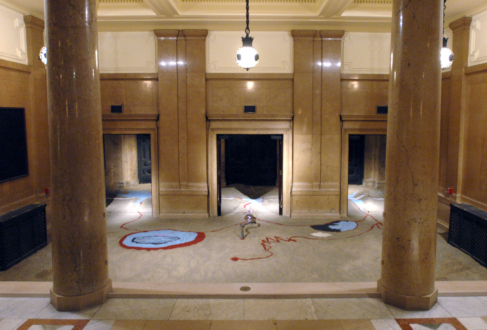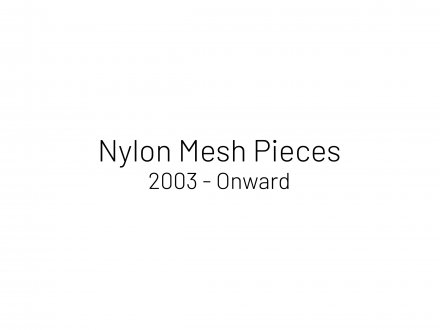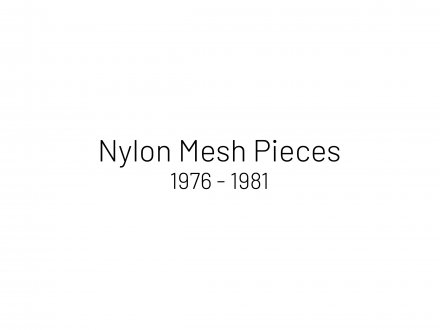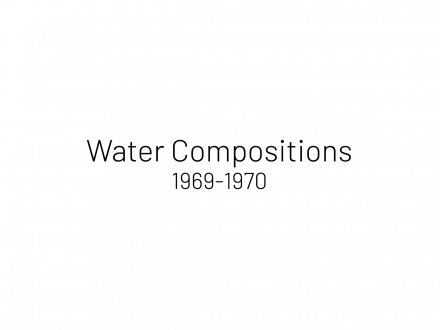Senga Nengudi (Works)
Selected Works
Senga Nengudi
Senga Nengudi
A distinguishing feature of Nengudi’s art is its radical opening to the everyday world. Some of her earliest works include pieces that viewers were meant to actively interact with in psychological, affective and discursive ways. One example is her Water Compositions series from the late 1960s and ‘70s, which consisted of heat-sealed vinyl casings filled with colored water. Smaller compositions of this type were displayed on a pedestal, and viewers were encouraged to activate them by picking them up, pressing or shaking them. Larger Water Compositions were attached to the exhibition walls with ropes, their appearance ultimately determined by gravity. Among other things, these sculptures engaged the viewer’s physical sensations, altering the unconscious relationship between the viewer’s body and the amorphous physicality of the objects.
This assemblage of material and body sits at the crux of Nengudi’s practice. It is also evident in her now-iconic R.S.V.P. series, which the artist has been working on since 1975. R.S.V.P. consists of women’s hosiery that has been stretched, knotted, filled with sand and tethered to various points in the exhibition space. The resulting kinetic sculptures become tactile, haptic sites for dance performances by Nengudi’s long-time collaborator Maren Hassinger.
The use of nylon stockings is coded in terms of both gender and ethnicity. Although explicitly made for women, many African American men have also used them to protect and care for their hair. The inherent physicality of the works—some of their elements recall flabby human body parts—is reinforced by the fact that the nylons have already been worn, i.e. shaped, stretched and abraded by various bodies. Nengudi herself once noted that she began working on the R.S.V.P. objects after gaining a new appreciation for the elasticity and resistance of her body and psyche after the birth of her first child. Consequently, these works can also be read as symbols of resilience and stamina. They point to social, gender and ethnic tensions and illustrate the ever-present attempt to alter the shape of female bodies in line with societal fantasies.
Nengudi’s nuanced practice continues to draw on a range of influences including Fluxus, the Gutai group and Happenings, the cultures of free jazz, spoken word, but also Yoruba mythology, Japanese Noh theater and African ritual practices. Her openness to dialogue with other cultures and art forms is a core feature of her work. This receptivity also comes through in such legendary performances as Ceremony for Freeway Fets (1978), a happening with artist friends under a highway bridge, or in more recent works including the video Side by Side (2006), in which she and Maren Hassinger perform collaboratively developed dance pieces. Nengudi’s works speak an artistic language that evokes the gravitas and seriousness of human experience—yet they also have a tangible spiritual presence conjured by the post-dramatic theatricality of cultural codes, as well as a distinct lightness of touch.
Written by Mara Hassan
Exhibitions with Thomas Erben
Exhibitions with Thomas Erben
Other Exhibitions
Other Exhibitions
Bodies of Work
Bodies of Work
Media
Senga Nengudi – Topologien/Topologies @ Lenbachhaus 2019
A walk-through of Senga Nengudi’s Topologien/Topologies at the Lenbachhaus 2019 in Munich.
Running September 17, 2019 – January 19, 2020
Curated by Stephanie Weber and Anna Straetmans
